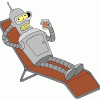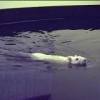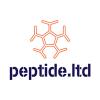
Lostfalco's Extensive Nootropic Experiments [Curated]
#1231
Posted 14 October 2013 - 08:32 PM
I'd be interested in hearing from others how long it takes before effects are seen following the 2 days on/one day off protocol.
#1232
Posted 15 October 2013 - 02:09 AM

Edited by zawy, 15 October 2013 - 02:13 AM.
#1233
Posted 15 October 2013 - 08:57 AM
I got a bigger electrode and just cover it all haha. I read tdcs increases regional cerebral bloodflow so increased activity in that region makes sense. I have also broken plateaus in Dual N-Back using this montage when otherwise I wouldve probably stayed static.
If anyone is inspired by my post, please take an IQ test. then do daily 20 minute left dlpfc anodal while playing dual n back for a month and check IQ again. I have a strong suspicion you will see huge lasting gains.
confounding factors: pregnenolone, fish oil
Edited by alpal, 15 October 2013 - 09:07 AM.
#1234
Posted 15 October 2013 - 12:47 PM
That's awesome alpal! Are you using this device? http://tdcs-kit.com/default.asp?page=7I've been using left dlpfc anodal tdcs for a couple weeks now, 4 days on, 1 day off. My focus is the best its ever been. The problem is that every little bit i move the electrode has an effect. Closer to eyebrow is more focus, closer to temple is more divided attention. (Divided attention is awesome, you can do a task and observe something irrelevant simultaneously without loss of ability). Inhibition is housed closer to forehead centre, and mood is higher near hair line corner.
I got a bigger electrode and just cover it all haha. I read tdcs increases regional cerebral bloodflow so increased activity in that region makes sense. I have also broken plateaus in Dual N-Back using this montage when otherwise I wouldve probably stayed static.
If anyone is inspired by my post, please take an IQ test. then do daily 20 minute left dlpfc anodal while playing dual n back for a month and check IQ again. I have a strong suspicion you will see huge lasting gains.
confounding factors: pregnenolone, fish oil
I haven't looked at the tDCS literature in a couple of months...so, a few questions for anyone who knows the answers. 1. Has anyone come up with a supplement combo to combine with it to enhance results? (I know a few people are looking into the D-Cycloserine combo right now...but it still seems like a high excitotoxicity risk to me) 2. What's the current best theory for the mechanism of action? Any recent progress there? 3. What is the current safety profile for tDCS? 4. Anyone try tRNS yet with the foc.us device? There were some very promising math enhancement results back in May.
Any info you guys have would be greatly appreciated. Thanks in advance and thanks alpal for sharing your results! =)
#1235
Posted 15 October 2013 - 01:41 PM
Zawy, I really want your halogen/sunlight ideas to be true...it would be a lot simpler for inexpensive whole brain stimulation. However, I've read hundreds of studies now and they all seem to indicate that having a narrow range of light is required. ie. If not narrow, then no (or weak) effects.About 30% of this is in the 600 to 900 nm range, about the same efficiency as LEDs, so it's possibly as good as an array since it's the most natural route. If your intuition is like mine, then you would guess about 30 minutes per day with a bald head might be really healthy for the brain, as well as the rest of the body. This would agree nicely with the research that says 1 J/cm^2 is needed, assuming 2% transmission through scalp and skull (0.03 W x 30 min x 60 sec/min x 2% = 1.1 J/cm^2).
However, the full range is not as efficient as 850 nm in activation, and half of that 600 to 900 nm range of the Sun will penetrate about half as well. So to do as good as the 850 nm LED at 30 minutes, you would need to be in the Sun over an hour.
It seems to me that you have this assumption: "if wavelength x, then effects from wavelength x." Whereas the studies seem to indicate, "if only wavelength x OR a narrow range around wavelength x, then effects from wavelength x." This is why the studies use lasers or LEDs and not halogen lamps or sunlight. Of course, there are examples of two wavelengths simultaneously working but I've never seen the entire 600-900 range used (I haven't read every study though!).
Again, I would love for the halogen/sunlight theory to be true. Do you have studies showing that it is effective or just as effective as lasers/LEDs? I'm a huge fan of theory but I'm a 'huger' fan of experiment. Nature continually surprises me when tested. I don't think that something like "historical humans got x amount of sunlight in wavelengths y-z for time t" is a sufficient argument. Can you point me to places where this has been tested?
Anyway, thanks again for all of your device building recommendations and contributions in the research thread. I hope you view this is a friendly discussion. I don't pretend to know everything and I'm genuinely asking. =)
Edited by lostfalco, 15 October 2013 - 01:49 PM.
#1236
Posted 15 October 2013 - 02:48 PM
The question i have now is in regards to amphetamines. This is an area i'm not familiar with. Does anyone know of some relatively safe amphetamines? I don't want to take anything I feel will even slightly inhibit the long term health of my brain.
I've heard very mixed things concerning amphetamines.
#1237
Posted 15 October 2013 - 03:08 PM
I've been using left dlpfc anodal tdcs for a couple weeks now, 4 days on, 1 day off. My focus is the best its ever been. The problem is that every little bit i move the electrode has an effect. Closer to eyebrow is more focus, closer to temple is more divided attention. (Divided attention is awesome, you can do a task and observe something irrelevant simultaneously without loss of ability). Inhibition is housed closer to forehead centre, and mood is higher near hair line corner.
I got a bigger electrode and just cover it all haha. I read tdcs increases regional cerebral bloodflow so increased activity in that region makes sense. I have also broken plateaus in Dual N-Back using this montage when otherwise I wouldve probably stayed static.
If anyone is inspired by my post, please take an IQ test. then do daily 20 minute left dlpfc anodal while playing dual n back for a month and check IQ again. I have a strong suspicion you will see huge lasting gains.
confounding factors: pregnenolone, fish oil
Where do you place the reference electrode (cathode) and what current strength do you use?
#1238
Posted 15 October 2013 - 03:15 PM
Edited by stephen_b, 15 October 2013 - 03:16 PM.
#1239
Posted 15 October 2013 - 03:36 PM
I haven't looked at the tDCS literature in a couple of months...so, a few questions for anyone who knows the answers. 1. Has anyone come up with a supplement combo to combine with it to enhance results? (I know a few people are looking into the D-Cycloserine combo right now...but it still seems like a high excitotoxicity risk to me)
I have yet to try this idea, but I am definitely interested in doing it some day. I have a hunch( although this is complete speculation) that tDCS will work well with CILTEP. If CILTEP is chemically induced LTP, tDCS may very well be called Electrically Induced LTP. Right now I am still on NSI-189 and I about to start TULIP later this week, but CILTEP + tDCS is on my todo list.
#1240
Posted 15 October 2013 - 04:56 PM
I have never tried to find studies (before now) that indicated full or wide spectrum was the same or better because the only reason I got seriously interested in LEDs was because I saw the effects from a halogen light bulb (nearly same broad spectrum as Sun). I was investigating red LEDs for arthritis and was surprised to see it seemed to work. But I felt it was not strong enough, so I tried halogen on injuries. "HOLY FREAKING COW" was my response to strong wide spectrum compared to "hmm, that seems to help a little" for weak LEDs. A halogen turned a newly-broken black and blue pinkie toe that had a pain level 8 to a nice pink color and a pain level of 2 after two minutes of super-intense halogen light with water blocking the far infrared heat, spread over about 5 minutes.However, I've read hundreds of studies now and they all seem to indicate that having a narrow range of light is required. ie. If not narrow, then no (or weak) effects.
Here are some on wide spectrum:
Do a pubmed search on "BIOPTRON". 23 studies are returned. Its website said it simulates the Sun except without UV.
Do a pubmed search on "Super Lizer" 15 results are returned. It's a halogen light that narrows its the range from 600 to 1600 nm.
http://www.ncbi.nlm....pubmed/15468027
(they used laser of different wavelengths at the ssame time but I could not find what wavelengths)
I bet there are more, but it's difficult doing searches because I do not have a specific name for the 600-900 nm range. Too many other topics are returned with "wide spectrum" and whatnot.
To turn the question around, can you show me one or more studies where narrow or single wavelength was shown to be more effective than wider spectrum that covered the same wavelengths or better than multiple wavelengths?
Edited by zawy, 15 October 2013 - 04:56 PM.
#1241
Posted 15 October 2013 - 07:35 PM
I plan to also continue CILTEP, which I'm 4 days in atm, with moderate results. I know Lostfalco stated before that both might be overkill, but since I take CILTEP in the early morning and TULIP is best done before bedtime, I'll just give it a try.
I will only laser (or rather "led") every other day, 2 regions a 30 seconds, and see if I can continue my CILTEP regimen anyway.
If anything interesting results, I 'll report back.
#1242
Posted 15 October 2013 - 07:36 PM
My reference electrode is on same side shoulder (left). 2 miliamps. anode electrode is 7x10.
Lostfalco, I am using trans-cranial.com. These videos are from a recent tdcs convention. Really amazing. Method of action at this point seems to be increased glutamate and depolarization of nerve cells (wha?) which makes them more likely to fire. So it doesnt increase action potentials, but increases the propensity for action potential by making neurons fire with less required stimulus. (My vague understand)
I am not allowed to post media cause im new but....
youtube.com/watch?v=3c2MJ71DEWg
youtube.com/watch?v=WPE7mU3myfk
youtube.com/watch?v=jUDeT331B6A
youtube.com/watch?v=dUMUIXNeBRQ
youtube.com/watch?v=9fz7r8VDV4o
#1243
Posted 15 October 2013 - 07:55 PM
Sounds cool Chris. I'm very interested to hear your results with the full CILTEP stack. Abelard has mentioned that he's had really good results recently with CILTEP + PQQ + CoQ10. He's not using the laser though. I think Forskolin + PQQ + Laser is where the potential problem lies since they all raise cAMP. I think you're wise to start with such a low laser dose. You can always go higher. Looking forward to hearing how it goes for you. =)My 96 LED device finally has arrived today, so I will start TULIPin' tonight.
I plan to also continue CILTEP, which I'm 4 days in atm, with moderate results. I know Lostfalco stated before that both might be overkill, but since I take CILTEP in the early morning and TULIP is best done before bedtime, I'll just give it a try.
I will only laser (or rather "led") every other day, 2 regions a 30 seconds, and see if I can continue my CILTEP regimen anyway.
If anything interesting results, I 'll report back.
On a related note...I've tried 10 minutes per region for the past few days right before bed and have felt really good the following day. I took yesterday off and will try 10 minutes per region again tonight. I have two 96 LED arrays so I'm doing 2 regions at a time, 4 regions per night, for a total of 20 minutes stimulation time.
#1244
Posted 15 October 2013 - 08:53 PM
Sounds cool Chris. I'm very interested to hear your results with the full CILTEP stack. Abelard has mentioned that he's had really good results recently with CILTEP + PQQ + CoQ10. He's not using the laser though. I think Forskolin + PQQ + Laser is where the potential problem lies since they all raise cAMP. I think you're wise to start with such a low laser dose. You can always go higher. Looking forward to hearing how it goes for you. =)My 96 LED device finally has arrived today, so I will start TULIPin' tonight.
I plan to also continue CILTEP, which I'm 4 days in atm, with moderate results. I know Lostfalco stated before that both might be overkill, but since I take CILTEP in the early morning and TULIP is best done before bedtime, I'll just give it a try.
I will only laser (or rather "led") every other day, 2 regions a 30 seconds, and see if I can continue my CILTEP regimen anyway.
If anything interesting results, I 'll report back.
On a related note...I've tried 10 minutes per region for the past few days right before bed and have felt really good the following day. I took yesterday off and will try 10 minutes per region again tonight. I have two 96 LED arrays so I'm doing 2 regions at a time, 4 regions per night, for a total of 20 minutes stimulation time.
Have you completely stopped using the vetro or are you working that in on some areas as well?
#1245
Posted 16 October 2013 - 12:05 AM
I still use the Vetro. It works great as well.Have you completely stopped using the vetro or are you working that in on some areas as well?
#1246
Posted 16 October 2013 - 02:11 AM
Godof Smallthings
My reference electrode is on same side shoulder (left). 2 miliamps. anode electrode is 7x10.
Lostfalco, I am using trans-cranial.com. These videos are from a recent tdcs convention. Really amazing. Method of action at this point seems to be increased glutamate and depolarization of nerve cells (wha?) which makes them more likely to fire. So it doesnt increase action potentials, but increases the propensity for action potential by making neurons fire with less required stimulus. (My vague understand)
I am not allowed to post media cause im new but....
youtube.com/watch?v=3c2MJ71DEWg
youtube.com/watch?v=WPE7mU3myfk
youtube.com/watch?v=jUDeT331B6A
youtube.com/watch?v=dUMUIXNeBRQ
youtube.com/watch?v=9fz7r8VDV4o
Thanks a lot for your reply - especially for posting the videos. I think anyone who is planning to use this technology should watch all of them. I'll try your regime with my device, but I'll probably reduce the current, since, due to having had episodes of depression, and possibly one manic episode, I have to tread carefully with glutamate increases.
#1247
Posted 16 October 2013 - 02:49 AM
#1248
Posted 16 October 2013 - 02:06 PM
Here's a thought for a relatively cheap whole-head device.
Purchase 19-21 of these IR LED arrays. They seem to be the same as the LED array inside the one popular among people here. It has a two pin power connector in the back.
Buy an adjustable headstrap such as this
Attach 10 LED arrays to the strap that covers the circumference of the head. Attach 5 along the strap that goes over the top of the head. Attach the other 4-6 arrays over the open spaces not covered by the straps on the sides of the head. Attach these to the other LED's with bungee or shock cord so they float comfortably.
Since it isn't enclosed it will take a while before it gets too hot.
Two technical questions I haven't looked into:
1. how to attach the arrays to the straps, perhaps epoxy? something heat resistant.
2. most importantly.. how to power. It'd require 20 two-pin power wires running to some sort of source. I'm hoping someone here with some electrical know-how can chime in.
If it works, we'dhave a relatively effective 1000 bulb LED helmet for around $250 or less.
Any thoughts?
I've been looking at that exact same thing (LED arrays), but the total cost was about $70 or so instead (without power).
http://www.aliexpres.../769933345.html - $0.047 ea - Free shipping
http://www.aliexpres...1261916124.html - $0.0418 ea + Free shipping
http://www.aliexpres.../505051318.html - $0,05 ea + $15.79 Shipping (to Sweden atleast), so there are a few options.
What power output would you get from 20 of those??
#1249
Posted 16 October 2013 - 02:58 PM
To turn the question around, can you show me one or more studies where narrow or single wavelength was shown to be more effective than wider spectrum that covered the same wavelengths or better than multiple wavelengths?
Sure. =)
Before I do, let me just say that my goal is simply to find what works...what will help people (and myself) as quickly and inexpensively as possible. My goal is not to win an argument or be a silly ass clown guru or something. Also, I have never performed a single randomized double blind placebo controlled study so I have to depend on studies performed by others. I'm just reading the research and hoping to get a group of us to 'hack' this together. Lastly, this post gives me the opportunity to use the phrase 'ram sperm' with a straight face...I just couldn't pass that up. =)
Anyway, there are a lot of subtleties with LLLT and all of us are still learning. Just because someone wrote a book it doesn't make them infallible. However, these guys have 30+ years of experience each so I generally trust what they say unless I have good reason to question it. Regardless, none of this is 100% cut and dried.
Main Source: The New Laser Therapy Handbook (2010) http://www.prima-boo...apyHandbook.php
Authors:
1. Lars Hode http://www.laserworl...ce/ref_hode.htm born in 1942, is a physicist, specialized in medical laser applications and working with laser therapy since 1983. He is the president and founder of the Swedish Laser-Medical Society 1989.
2. Jan Tuner http://www.tuner.nu/ DR. JAN TUNÉR was born on 1942, Grangesberg, Sweden. He is in a Private Practice since 1979- in a Private clinic at Grangesberg, Sweden. In 1968 Examination from the Dental Faculty of the Karolinska Institute, Stockholm, Sweden. 1969-1975 Employed in dental clinics of the Swedish government. 1975-1978 Private clinics, Örebro, Sweden. He is the current Membership Secretary of the World Association for Laser Therapy and a Member of the Editorial Board of the journal “Laser Therapy 1996-2003, and a Member of the Editorial Board of the Journal Photomedicine and Laser surgery 2004, Educator, Swedish Dental Association, and the Editor of “Laser World” www.laser.nu He is also the V. president of: Swedish Laser-Medical Society (SLMS). And he is the author of more than 20 publications.
Quotes:
“The biological effects of the sun are obvious, but they differ a lot from that of laser therapy. However, it has been demonstrated that the effects on cells from a laser can be eradicated if the cells later are subjected to broadband light (like the sunshine).” p. 111
“In the clinic the ambient light is not very important but when LPT is performed, the ambient light should be reasonably reduced, not to interfere with the therapeutic light. For the in vitro situation, the importance of regulating the ambient light is indeed important and may be more complex than first suggested.” p. 125
“Does it have to be a laser? Could we use a normal torchlight instead? Of course we could, but we would not achieve the same biological effects as with a laser. It is known...that all light affects the living organism, but in a number of studies in which the effects of light from various sources have been compared, the laser light is shown to give the strongest effect." p. 143
“Wide-band radiation, such as that from the sun, exhausts a lot of excited levels, thus inhibiting the effect of the laser therapy.” p. 557
Tiina Karu quoted in ‘The New Laser Therapy Handbook’
“The biological response to laser stimulation can be significantly different according to the sequence in which different wavelengths are applied, and even non-existent if two or more wavelengths are used simultaneously.” p. 562
“The effect of laser light may be partly or completely reduced by broad-spectrum light. There are few studies that investigate the benefit or detriment of combining laser irradiation with broad-spectrum or IR light.” They go on to quote this Hawkins study on page 125. http://www.ncbi.nlm....pubmed/17603855
They also mention this study http://www.ncbi.nlm.nih.gov/pubmed/16356145 in which, “Sperm taken from tilapia showed higher motility and fertility following red and white light irradiation. In contrast, the motility and fertility of ram sperm were slightly increased only by red light. A negative effect on motility and fertility of sperm of both species was obtained following irradiation with UV and blue light.” p. 126
Hawkins Study Abstract
Photomed Laser Surg. 2007 Jun;25(3):159-69.
Influence of broad-spectrum and infrared light in combination with laser irradiation on the proliferation of wounded skin fibroblasts.
Hawkins D, Abrahamse H.
Source
Laser Research Group, University of Johannesburg, Doornfontein, Johannesburg, South Africa.
Abstract
OBJECTIVE:
This study aimed to establish if broad-spectrum or infrared (IR) light in combination with laser therapy can assist phototherapy and accelerate cell proliferation to improve the rate of wound healing.
BACKGROUND DATA:
The effect of laser light may be partly or completely reduced by broad-spectrum light. There are few studies that investigate the benefit or detriment of combining laser irradiation with broad-spectrum or IR light.
METHODS:
Wounded human skin fibroblasts were irradiated with a dose of 5 J/cm(2) using a heliumneon laser, a diode laser, or a Nd:YAG laser in the dark, in the light, or in IR. Changes in cell proliferation were evaluated using optical density at 540 nm, alkaline phosphatase (ALP) enzyme activity, cytokine expression, and basic fibroblast growth factor (bFGF) expression.
RESULTS:
The optical density and ALP enzyme activity indicate that 5 J/cm(2) using 1064 nm in the light is more effective in increasing cell proliferation or cell growth than 830 nm in the light, but not as effective as 632.8 nm in the light. bFGF expression shows that the response of wounded cells exposed to 5 J/cm(2) in IR light is far less than the biological response of wounded cells exposed to 5 J/cm(2) in the dark or light. The results indicate that wounded cells exposed to 5 J/cm(2) using 632.8 nm in the dark results in a greater increase in IL-6 when compared to cells exposed to 5 J/cm(2) in the light or in IR.
CONCLUSION:
Results indicate that 5 J/cm(2) (using 632.8 nm in the dark or 830 nm in the light) is the most effective dose to stimulate cell proliferation, which may ultimately accelerate or improve the rate of wound healing.
Zan-Bar Study Abstract
Photomed Laser Surg. 2005 Dec;23(6):549-55.
Influence of visible light and ultraviolet irradiation on motility and fertility of mammalian and fish sperm.
Zan-Bar T, Bartoov B, Segal R, Yehuda R, Lavi R, Lubart R, Avtalion RR.
Source
Life Sciences Department, Bar-Ilan University, Ramat-Gan, Israel.
Abstract
OBJECTIVE:
The effects of visible light irradiation on sperm motility, fertility, and reactive oxygen species (ROS) formation were investigated and compared in ram and fish (tilapia).
BACKGROUND DATA:
Low-energy visible light has previously been found to modulate various processes in different biological systems. In the literature, it is accepted that the first step following visible light irradiation is the formation of ROS by endogenous cellular photosensitizers.
METHODS:
Sperm of ram and tilapia were irradiated with various light sources (400-800 nm white light, 660 nm red light, 360 nm blue light, 294 nm UV), and their motility and fertility rates were measured. The amount of ROS generated by irradiation was estimated using electron paramagnetic resonance (EPR) technique.
RESULTS:
Sperm taken from tilapia showed higher motility and fertility following red and white light irradiation. In contrast, the motility and fertility ofram sperm were slightly increased only by red light. A negative effect on motility and fertility of sperm of both species was obtained following irradiation with UV and blue light. The amount of ROS produced in irradiated tilapia sperm was much higher than that of ram sperm.
CONCLUSIONS:
The results show that different wavelengths differentially affect tilapia and ram sperm motility and fertilization. The difference in response to the various light sources might be explained by the different amounts of ROS formation by ram and tilapia, which are in agreement with the physiology of fertilization appropriate to each of these species. Based on these results, it is suggested that in vitro fertilization in mammals should be performed in darkness or at least under red light.
Edited by lostfalco, 16 October 2013 - 03:27 PM.
#1250
Posted 16 October 2013 - 03:15 PM
Sounds cool Chris. I'm very interested to hear your results with the full CILTEP stack. Abelard has mentioned that he's had really good results recently with CILTEP + PQQ + CoQ10. He's not using the laser though. I think Forskolin + PQQ + Laser is where the potential problem lies since they all raise cAMP. I think you're wise to start with such a low laser dose. You can always go higher. Looking forward to hearing how it goes for you. =)My 96 LED device finally has arrived today, so I will start TULIPin' tonight.
I plan to also continue CILTEP, which I'm 4 days in atm, with moderate results. I know Lostfalco stated before that both might be overkill, but since I take CILTEP in the early morning and TULIP is best done before bedtime, I'll just give it a try.
I will only laser (or rather "led") every other day, 2 regions a 30 seconds, and see if I can continue my CILTEP regimen anyway.
If anything interesting results, I 'll report back.
On a related note...I've tried 10 minutes per region for the past few days right before bed and have felt really good the following day. I took yesterday off and will try 10 minutes per region again tonight. I have two 96 LED arrays so I'm doing 2 regions at a time, 4 regions per night, for a total of 20 minutes stimulation time.
Ok, so it is official now that longer sessions are safe and more beneficial?
I am now one month in with 2 minutes per region, 3 sessions per week, think it is ok to try a longer, lets say 5 minutes per spot session and see what happens?
Thanks
Edited by Barfly, 16 October 2013 - 03:15 PM.
#1251
Posted 16 October 2013 - 03:24 PM
Safe...yeah. More beneficial...possibly. I think 5 minutes is worth a try since you're a month in. =)Ok, so it is official now that longer sessions are safe and more beneficial?
I am now one month in with 2 minutes per region, 3 sessions per week, think it is ok to try a longer, lets say 5 minutes per spot session and see what happens?
Thanks
#1252
Posted 16 October 2013 - 03:45 PM
What power output would you get from 20 of those??
That's the problem, I have no clue :P
If my trail is successful I'm gonna mail them and ask a bit about them. Feel free to do it yourself if you want it potentially cheaper.
#1253
Posted 17 October 2013 - 04:51 PM
Authors:
1. Lars Hode http://www.laserworl...ce/ref_hode.htm born in 1942, is a physicist, specialized in medical laser applications and working with laser therapy since 1983. He is the president and founder of the Swedish Laser-Medical Society 1989.
2. Jan Tuner http://www.tuner.nu/ www.laser.nu He is also the V. president of: Swedish Laser-Medical Society (SLMS). And he is the author of more than 20 publications.
I can't get quoting to work right so my responses are in bold. Their book and careers are based on lasers being special which was the initial assumption when they started. That has been proven wrong many times.
The biological effects of the sun are obvious, but they differ a lot from that of laser therapy. However, it has been demonstrated that the effects on cells from a laser can be eradicated if the cells later are subjected to broadband light (like the sunshine).
Yes, too much light therapy negates the results. Lasers will undo the benefits of the Sun.
“In the clinic the ambient light is not very important but when LPT is performed, the ambient light should be reasonably reduced, not to interfere with the therapeutic light. For the in vitro situation, the importance of regulating the ambient light is indeed important and may be more complex than first suggested
Considering the weakness of typical indoor lighting, in vivo across the skin, this pretty incredible (i.e., not believable). In vitro, yes, I would not want ambient light shining directly on the cells to affect the results, such as using a heat lamp over open cultures.
“Does it have to be a laser? Could we use a normal torchlight instead? Of course we could, but we would not achieve the same biological effects as with a laser. It is known...that all light affects the living organism, but in a number of studies in which the effects of light from various sources have been compared, the laser light is shown to give the strongest effect." p. 143
Does he mean you need to apply LEDs only 20% longer to get an identical response?
“Wide-band radiation, such as that from the sun, exhausts a lot of excited levels, thus inhibiting the effect of the laser therapy.” p. 557
This could be true, but I would like to see to what they are referring. For example, I mentioned before that having 850 and 630 at the same time (instead of the 660) might not be as good. But the body as complex, and there are other effects than the one being studied at any particular time that require simultaneous wavelengths. But as a sweeping approximate generalization, I believe "broad spectrum is as good". It's mostly about intensity and making sure you include some of the beneficial wavelengths.
Tiina Karu quoted in ‘The New Laser Therapy Handbook’
“The biological response to laser stimulation can be significantly different according to the sequence in which different wavelengths are applied, and even non-existent if two or more wavelengths are used simultaneously.” p. 562
I trust Karu as a source and I hope they were quoting her in context. Yes, I can see situations where this can be true, but I have not seen where it applies to CCO's ATP production. It is easy to imagine that if you select 2 wavelengths to counteract, then an effect can be negated. But I believe that will be a rare occurrence and a lot less likely to happen with broad spectrum
“The effect of laser light may be partly or completely reduced by broad-spectrum light. There are few studies that investigate the benefit or detriment of combining laser irradiation with broad-spectrum or IR light.” They go on to quote this Hawkins study on page 125. http://www.ncbi.nlm....pubmed/17603855
They say only that it "may" occur.
They also mention this study http://www.ncbi.nlm.nih.gov/pubmed/16356145 in which, “Sperm taken from tilapia showed higher motility and fertility following red and white light irradiation. In contrast, the motility and fertility of ram sperm were slightly increased only by red light. A negative effect on motility and fertility of sperm of both species was obtained following irradiation with UV and blue light.” p. 126
I would expect this. I would have guessed the red to do better than the white light at the same intensity because the energy from red and infrared would be very small. Light concentrated in the blue and UV will be harmful, such as killing bacteria that cause acne and reducing wound infections.
Hawkins Study Abstract
Photomed Laser Surg. 2007 Jun;25(3):159-69.
Influence of broad-spectrum and infrared light in combination with laser irradiation on the proliferation of wounded skin fibroblasts.
Hawkins D, Abrahamse H.
CONCLUSION:
Results indicate that 5 J/cm(2) (using 632.8 nm in the dark or 830 nm in the light) is the most effective dose to stimulate cell proliferation, which may ultimately accelerate or improve the rate of wound healing.
They used a 100 W heat lamp from a pet store 7 inches above the open-culture samples for 6 to 41 minutes. doh! That would have to be at least 12 J/cm^2 at the lowest dose, and about 80 J/cm^2 at the highest dose. They made no attempt to calculate the IR or light intensity. Makes you want to go "hmmmmm".
.
Influence of visible light and ultraviolet irradiation on motility and fertility of mammalian and fish sperm.
Zan-Bar T, Bartoov B, Segal R, Yehuda R, Lavi R, Lubart R, Avtalion RR.
Source
Life Sciences Department, Bar-Ilan University, Ramat-Gan, Israel.
Abstract
OBJECTIVE:
The effects of visible light irradiation on sperm motility, fertility, and reactive oxygen species (ROS) formation were investigated and compared in ram and fish (tilapia).
I addressed this above. Now, compare the above to the search terms I gave. Hydrosun, Bioptron, and SuperLizer are search terms for manufacturers that use halogen in sports injuries and vetinarian applications. You've mentioned it before, so let me say that just because I disagree with you and show evidence to the contrary, it does not mean I am trying to be unfriendly. It's best to just view me as autistic.
Edited by zawy, 17 October 2013 - 05:03 PM.
#1254
Posted 17 October 2013 - 05:27 PM
#1255
Posted 17 October 2013 - 07:20 PM
Just a quick question: I usually take a sleep-stack that looks as follows:
400mg ashwagandha
800mg L-Tryptophan ( I realized this compliments the Dopamin/Noradrenaline precursors I take fot CILTEP in the morning nicely)
ZMA
A tiny dose of Rivotril (not taking this regularly, and won't take it for long either - I got it prescribed for my apnea-issues until I get my CPAP-mask in January)
Personally, I don't see how any of this would interfere negatively with TULIP, then again I thought it might not hurt to ask the people here, who unlike me actually know their science...
#1256
Posted 17 October 2013 - 09:35 PM
#1257
Posted 17 October 2013 - 10:10 PM
What's up basic? Are the LEDs still not working for you? I know some people in the LLLT community recommend pressing the LEDs (not too hard) against your skin in order to displace blood/water and get an extra mm or so closer to the brain. Have you tried this?Has anyone here gone from using the LED's (infrared) to using the Laser? I'm curious to see what peoples opinions are on if they feel a difference of moving from one to the other. I know what the literature says because i've spent hours reading it but now I'm looking for real person feedback.
My personal experience with the Vetro and the LEDs has been that they are fairly comparable. I used the Vetro for 6 months and now I sometimes use the LEDs and sometimes the Vetro on my stim days.
#1258
Posted 18 October 2013 - 12:41 AM
Makes me wonder if using the LED in the morning might not be a better idea.
#1259
Posted 18 October 2013 - 05:18 AM
Cool. So your main evidence is that halogen/sunlight worked for your injury. Have you tried them specifically for brain enhancement? I haven't seen any studies on this but I'm open to it working.I have never tried to find studies (before now) that indicated full or wide spectrum was the same or better because the only reason I got seriously interested in LEDs was because I saw the effects from a halogen light bulb (nearly same broad spectrum as Sun). I was investigating red LEDs for arthritis and was surprised to see it seemed to work. But I felt it was not strong enough, so I tried halogen on injuries. "HOLY FREAKING COW" was my response to strong wide spectrum compared to "hmm, that seems to help a little" for weak LEDs. A halogen turned a newly-broken black and blue pinkie toe that had a pain level 8 to a nice pink color and a pain level of 2 after two minutes of super-intense halogen light with water blocking the far infrared heat, spread over about 5 minutes.
Would you mind picking one or two representative studies for each of these devices that show their effects on brain function?Here are some on wide spectrum:
Do a pubmed search on "BIOPTRON". 23 studies are returned. Its website said it simulates the Sun except without UV.
Do a pubmed search on "Super Lizer" 15 results are returned. It's a halogen light that narrows its the range from 600 to 1600 nm.
The conclusion of this study was this: "Multiwavelength light therapy from a gallium-aluminum-arsenide laser source did not influence overall healing pressure ulcers. Limited evidence suggested that it improved healing of stage 3 and 4 pressure ulcers."http://www.ncbi.nlm....pubmed/15468027
(they used laser of different wavelengths at the ssame time but I could not find what wavelengths)
I've looked and I haven't been able to find brain studies either. You wanna try it out and report back? =)I bet there are more, but it's difficult doing searches because I do not have a specific name for the 600-900 nm range. Too many other topics are returned with "wide spectrum" and whatnot.
#1260
Posted 18 October 2013 - 06:23 AM
I can't get quoting to work right so my responses are in bold. Their book and careers are based on lasers being special which was the initial assumption when they started. That has been proven wrong many times.
I agree. Lasers work but it's not true that 'only' lasers work. They admit as much in the 2010 revised version. There is a whole chapter on the efficacy of LEDs based on more recent research.
Their point is related to 'type of light', not 'amount of light'. I agree with you that too much light is bad. Saying that 'lasers will undo the benefits of the sun' sounds like rhetoric to me (even though I agree with the statement if you change it to 'lasers could possibly undo the benefits of the sun'). We both know that the sun could also undo the benefits of lasers if the dose is high enough.The biological effects of the sun are obvious, but they differ a lot from that of laser therapy. However, it has been demonstrated that the effects on cells from a laser can be eradicated if the cells later are subjected to broadband light (like the sunshine).
Yes, too much light therapy negates the results. Lasers will undo the benefits of the Sun.
They are simply advising caution when treating patients...not stating something 'incredible'. Many offices have pretty intense lamps that doctors use to examine patients. A little overly cautious...probably. Incredible...no.“In the clinic the ambient light is not very important but when LPT is performed, the ambient light should be reasonably reduced, not to interfere with the therapeutic light. For the in vitro situation, the importance of regulating the ambient light is indeed important and may be more complex than first suggested
Considering the weakness of typical indoor lighting, in vivo across the skin, this pretty incredible (i.e., not believable). In vitro, yes, I would not want ambient light shining directly on the cells to affect the results, such as using a heat lamp over open cultures.
?Does it have to be a laser? Could we use a normal torchlight instead? Of course we could, but we would not achieve the same biological effects as with a laser. It is known...that all light affects the living organism, but in a number of studies in which the effects of light from various sources have been compared, the laser light is shown to give the strongest effect." p. 143
Does he mean you need to apply LEDs only 20% longer to get an identical response?
I would like it if 'broad spectrum is as good'...I just don't have much evidence for that especially compared to '825nm is good' (this of course is different than a comparative statement such as '825 is better than broad spectrum'). My main point is that we just don't know and my main concern is that you sometimes seem to assume that it is known that 'broad spectrum is as good'. Don't get me wrong...it totally might be. I just don't think there is very strong evidence for that yet.Wide-band radiation, such as that from the sun, exhausts a lot of excited levels, thus inhibiting the effect of the laser therapy.” p. 557
This could be true, but I would like to see to what they are referring. For example, I mentioned before that having 850 and 630 at the same time (instead of the 660) might not be as good. But the body as complex, and there are other effects than the one being studied at any particular time that require simultaneous wavelengths. But as a sweeping approximate generalization, I believe "broad spectrum is as good". It's mostly about intensity and making sure you include some of the beneficial wavelengths.
Agreed...Karu is cool. There are many other effects of LLLT than just CCO absorption.Tiina Karu quoted in ‘The New Laser Therapy Handbook’
“The biological response to laser stimulation can be significantly different according to the sequence in which different wavelengths are applied, and even non-existent if two or more wavelengths are used simultaneously.” p. 562
I trust Karu as a source and I hope they were quoting her in context. Yes, I can see situations where this can be true, but I have not seen where it applies to CCO's ATP production. It is easy to imagine that if you select 2 wavelengths to counteract, then an effect can be negated.
I agree that broad spectrum might work but I just don't think there is very strong evidence for it compared to the well studied red and near infrared wavelengths that we've been experimenting with.But I believe that will be a rare occurrence and a lot less likely to happen with broad spectrum
The effect of laser light may be partly or completely reduced by broad-spectrum light. There are few studies that investigate the benefit or detriment of combining laser irradiation with broad-spectrum or IR light.” They go on to quote this Hawkins study on page 125. http://www.ncbi.nlm....pubmed/17603855
They say only that it "may" occur.
This is kind of my point. My point is this: the evidence for the efficacy of broad spectrum light is presently weak (though that could change), therefore zawy's statements that it is effective (esp. on the brain) are overstated (though by no means false). I understand the theory behind your statements but I just think it's a complex issue at this point due to the massive numbers of biological and laser/light-related variables. If you can show me that a halogen lamp will work quickly and effectively on my brain then I'll be the first to start using one. =)
I addressed this above. Now, compare the above to the search terms I gave. Hydrosun, Bioptron, and SuperLizer are search terms for manufacturers that use halogen in sports injuries and vetinarian applications.
As mentioned before...please select a top one or two studies on each and I'll be happy to check them out. Brain related would be best since that's my focus.
Cool. I'm a big believer in the phrase that 'if you're arguing on the internet you've already lost'. I think it's more productive to have discussions in which we are seeking the truth, not seeking to win. Just want to make sure that's clear. =)You've mentioned it before, so let me say that just because I disagree with you and show evidence to the contrary, it does not mean I am trying to be unfriendly. It's best to just view me as autistic.
I was thinking more Asperger's than autistic. I'm just teasing you dude. I look forward to your response.
Edited by lostfalco, 18 October 2013 - 06:33 AM.
Also tagged with one or more of these keywords: nootropic
1 user(s) are reading this topic
0 members, 1 guests, 0 anonymous users




















































